Amsterdam, with its historical city center, canals and attractions, has a strong identity. The city has several options to intensify, implement and promote this strength and a good example is the Amsterdam Light Festival in which the city both uses and strengthens its identity. The festival offers a stage to light artists to give a new perspective on the city, its architecture and its hidden qualities. Each year, the city serves as a background for new art and light installations that have a unique theme and connect with the specific characteristics of the city.
Magical light art along the canals
Amsterdam, the capital city of the Netherlands, is one of the most popular tourist destinations in Europe. Each Amsterdam neighbourhood of districts established in the 19th- and 20th-century around the 17th-century canal ring area has its own character and charm. Millions of international and Dutch tourists visit the city annually.
In the winter months, Amsterdam comes into its own, with a festive atmosphere, long nights and beautifully-lit streets. And for the last five years yet another dimension is being added to the city in the form of the Amsterdam Light Festival (ALF). The magical light works of art along the canals transform the city into a giant outdoor art gallery during the dark winter months of December and January.
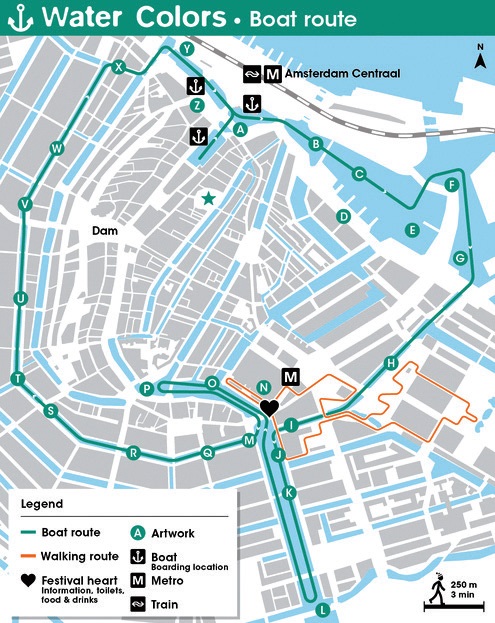
The ALF was first held in 2011. It is characterised by the many works of Dutch and international artists, arranged in the public spaces of the city center, illuminating and transforming its familiar monuments in magical and surprising ways. The fifth edition of the festival ended on January 22, 2017 and attracted over 900,000 visitors, including many Dutch people who came to experience their capital from a different perspective.
The works of art are placed along a boat route with the name ‘Water Colors’ and a walking route named ‘Illuminade’. Both routes have their own works of art that are made especially for the festival and relate to a unique theme. Water Colors, the boat route, displays big monumental objects in and along the canals of Amsterdam and offers visitors the chance to experience art from a water perspective.
The Illuminade walking route is two-three kilometres-long and shows over 20 interactive and innovative installations from upcoming designers in the Weesper and Plantage neighbourhoods.
This year’s theme of Water Colors was ‘A view on Amsterdam’. Artists were challenged to give a new perspective on the city and its architecture, with light structures that bind to the specific characteristics of the city. The theme is interpreted by the artists in their own way, sometimes historic, futuristic or with humour and irony. The artworks offer new perspectives to both the visitors and the inhabitants and raise questions about the city.
For example, the Lighting Design Academy’s ‘Welcome to my home town’ initially seems to be a three-dimensional representation of a number of houses, but when you look at it from different angles, the artwork turns out to be a two-dimensional framework of illuminated lines. With this optical illusion, the artist wants to evoke questions about the essence of the city and the (unexpected) effect of choosing a different perspective.
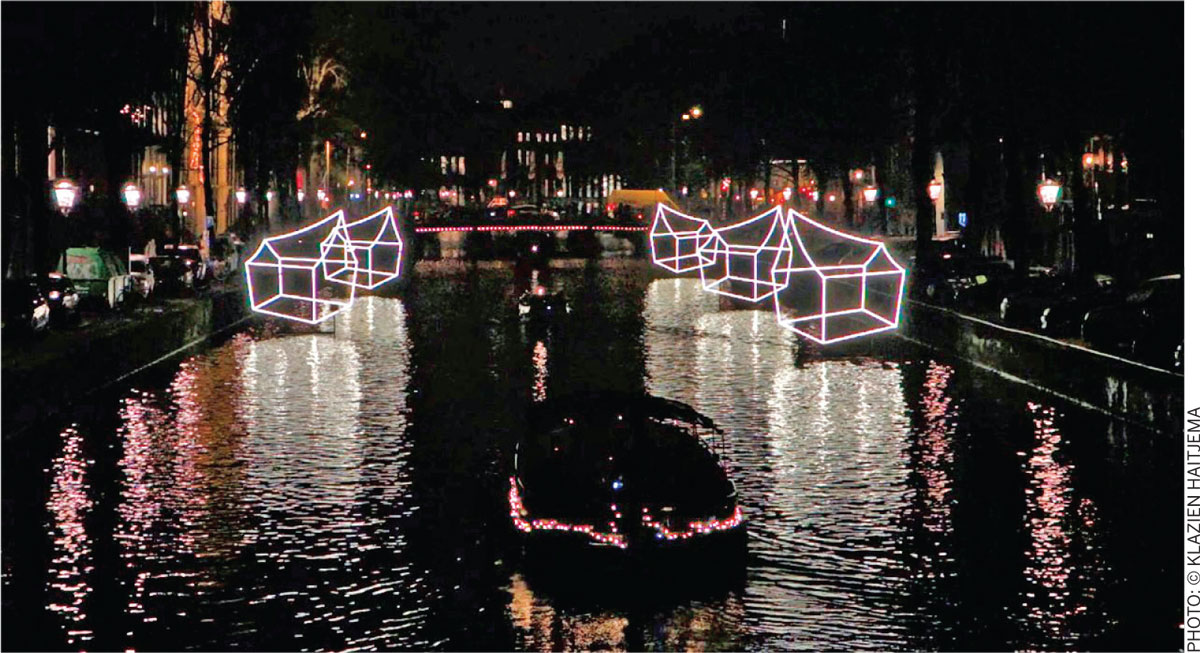
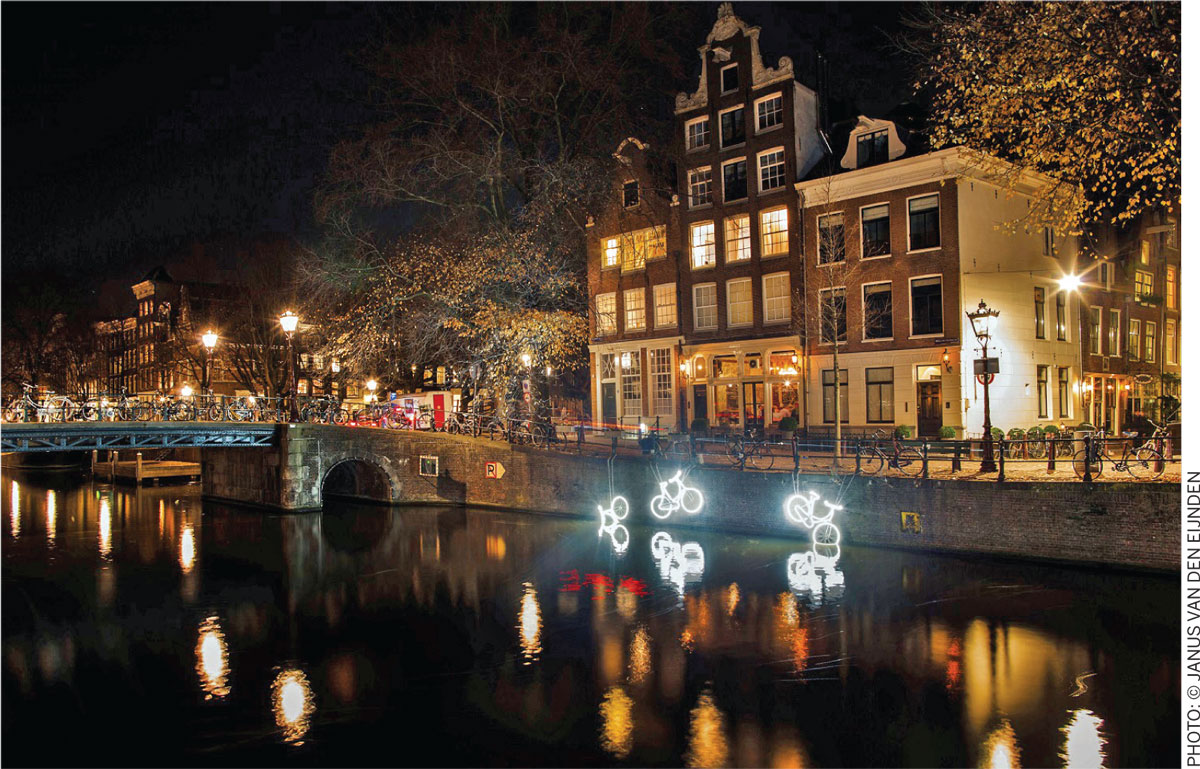
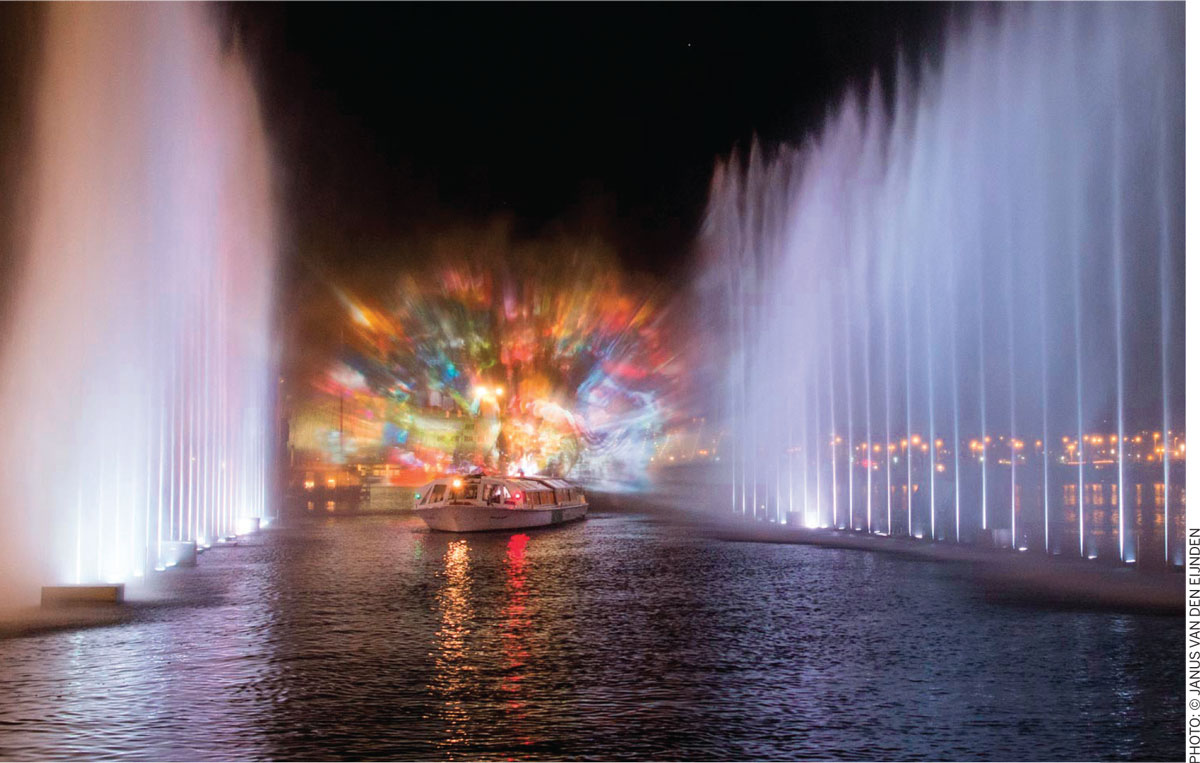
A very different kind of artwork is ‘The Lace’ by Choi + Shine Architects. This work consists of 33,000 metres of light reflective thread. It symbolises the densely-woven city of Amsterdam: weaving of different people, woven urban structures (canals, rivers, squares and roads) and incorporates the historic city with the Amsterdam of the future.
A work of art called ‘15000 and More’ by Studio Klus, refers to the fact that there are more bikes than people in Amsterdam and the fact that about 15,000 bikes are fished out of Amsterdam canals every year.
This year’s theme for Illuminade was ‘Biomimicry, inspired by nature’. Biomimicry is the science in which natural functions, models, systems and strategies are translated into practical applications for innovation. Think of a termite hill whose properties are copied in the design of an office building to drastically reduce energy consumption or the blades of a wind turbine that are cut like the fins of a whale to yield more energy.
Biomimicry is not new, but there is increasing interest in the subject and more and more disciplines consciously try to use it.
The artworks designed for the ALF engage in a dialogue around all aspects of the biomimicry theme.
Rogier van der Heide, the artistic director of the ALF, chose the theme deliberately: “For the Amsterdam Light Festival, the challenge was to connect the worlds of art and science. With this theme we didn’t make it easy for the artists; it is difficult enough to translate biomimicry into concrete objects, let alone create a light sculpture on this theme. Yet the artists have convincingly succeeded, with inspiring works of art as a result.”
A sign is placed next to every artwork, which mentions the title, name of the artist(s) and a brief explanation of the work of art. The sign near the artwork ‘Tree Hugger’ by Daan van Hasselt and Asia Jackowska for expamle, explains that trees are interconnected and that recent research shows that trees can survive natural disasters thanks to their underground connections with one another. The artists invite the visitors to hug a tree. Once you embrace a tree, it lights up. When one tree is embraced, the neighbouring trees (which are part of this work of art) light up too. In this way, the invisible underground connections between the trees are made visible and are a feast for the eyes.
This principle is also expected to be applied more and more in architecture, with clusters of buildings, which are connected underground and, therefore, are strong enough to survive earthquakes and hurricanes.
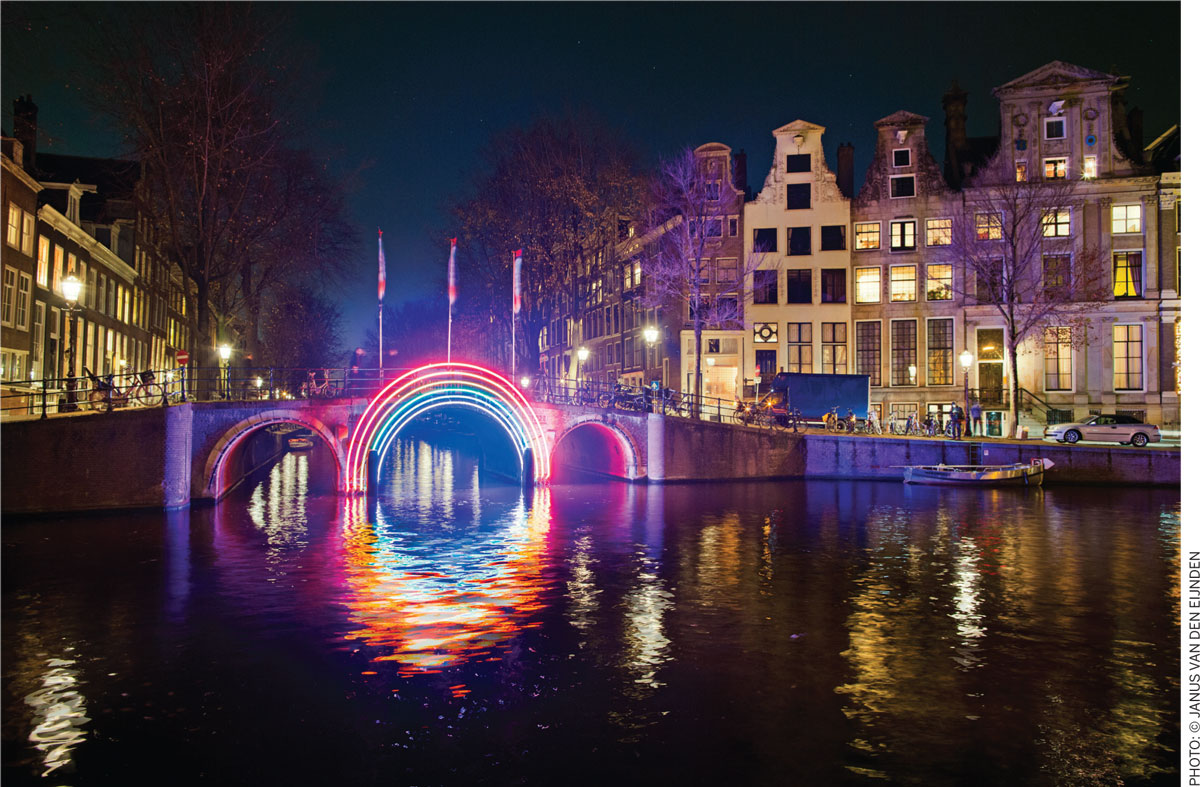
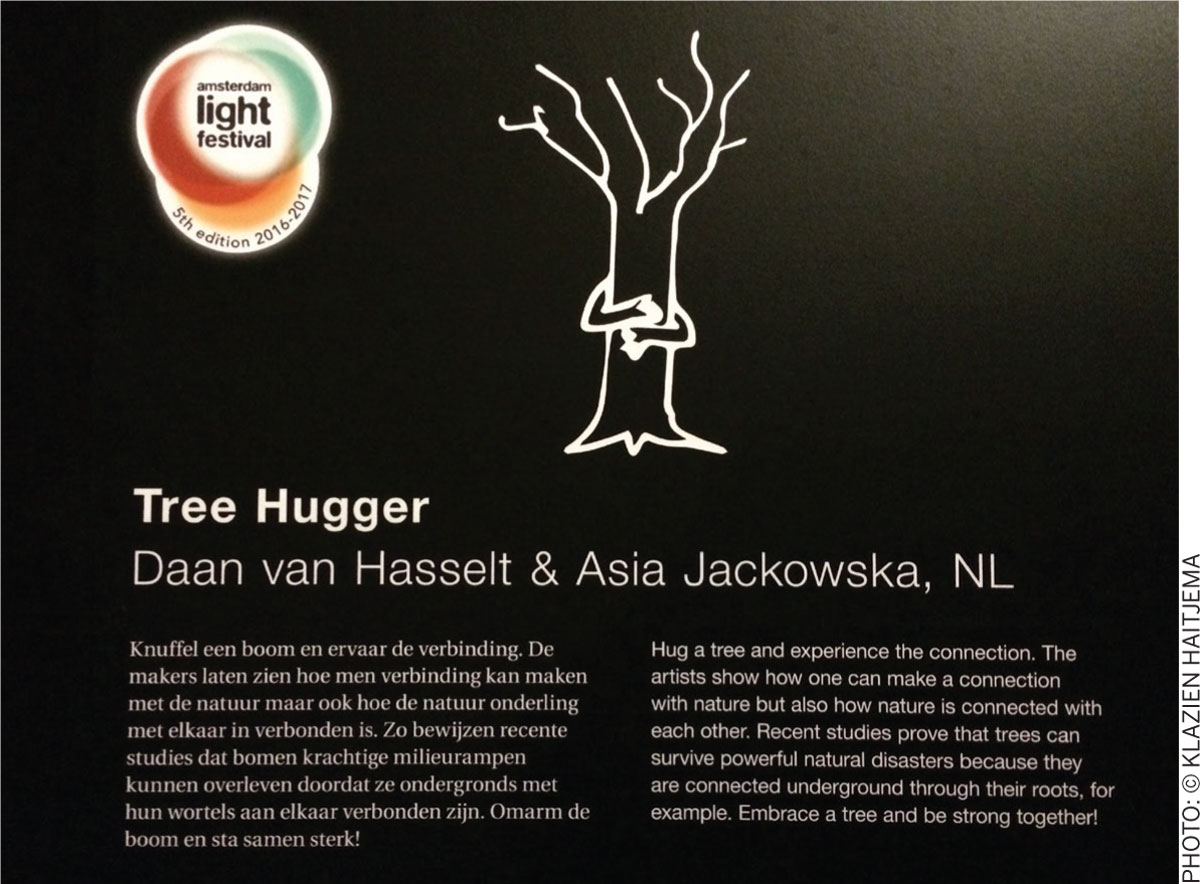
Publicly accessible
Recently, The Guardian proclaimed the Amsterdam Light Festival as one of the most beautiful light festivals in Europe, partly because it is the only light art festival you can enjoy from the comfort of a boat. Plus, the festival is accessible free of charge and the festival’s website shows the visitor where to find the various works of art. On various locations in the city one can buy detailed maps of both routes, as well as the Light Book – a book in two languages with background information on the structures and the artists. But even without a map, the walking route is easily recognisable thanks to theme lights along the entire route and volunteers standing at crucial points, providing information about the art projects and the path to follow.
The Water Colors route can be enjoyed free of charge too, by foot, by bicycle or in a private boat. However, the best experience is to watch this route from the water and several canal companies offer special water tours with a guide on board to explain the works of art: their meaning, how they came about and who made them.
The festival aims to invite visitors to experience the city in a novel way and simultaneously stimulate the development of light art and light artists. It also aims to introduce light art to a larger audience.
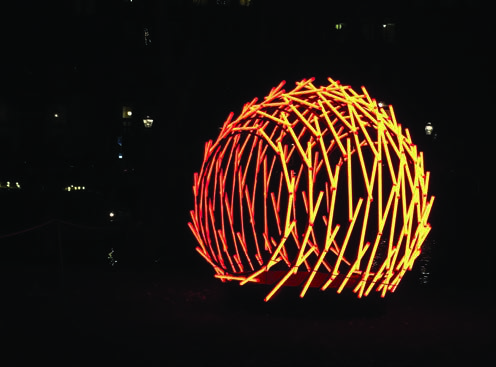 | 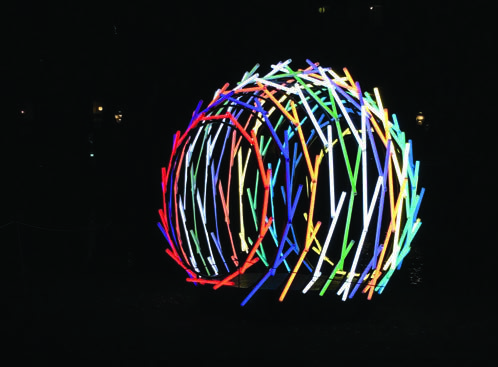 |
Animals are very practical about their home and will build a new one from scratch if they need to. Maybe mankind should reevaluate if it is necessary to only build permanent constructions. ‘NEST’ from Vikas Patil and Santosh Gunjar triggers us to look at buildings with an open mind | |
Broad target group
With their choice of selected works, the jury aims to attract and please art lovers as well as a broad audience of all ages. A new aspect in the selection of the works of art for the festival this year was the involvement of a children’s jury. After attending several workshops on judging and about the two themes of the latest festival, children came together to choose a work for Illuminade. They had the opportunity to assess several of the submitted designs.
Furthermore, children of eight Amsterdam primary schools participated in a special project to create their own artwork for Illuminade under the supervision of a foundation that organises special programmes to connect children with their neighbourhood. During a workshop in the Hortus Botanicus, the children learned about the festival and the theme of ‘biomimicry’. After an assignment to ‘think like nature’, the children shared their views on innovation and sustainability and chalked out what role nature can play. The works of art created by the children were placed in the ‘Festival Heart’ on the Illuminade route. So, the children of Amsterdam contributed actively to the festival.
Another special feature of the festival is ‘Light My Ride’. During this one-day event, participants are challenged to decorate their non-motorised vehicles with various kinds of lights and to form a large rolling work of light artwork. Innovation, collaboration and creativity are paramount. The route of ‘Light My Ride’ leads along several works of the festival and offers participants, local residents and the public a unique and creative opportunity to participate in the festival.
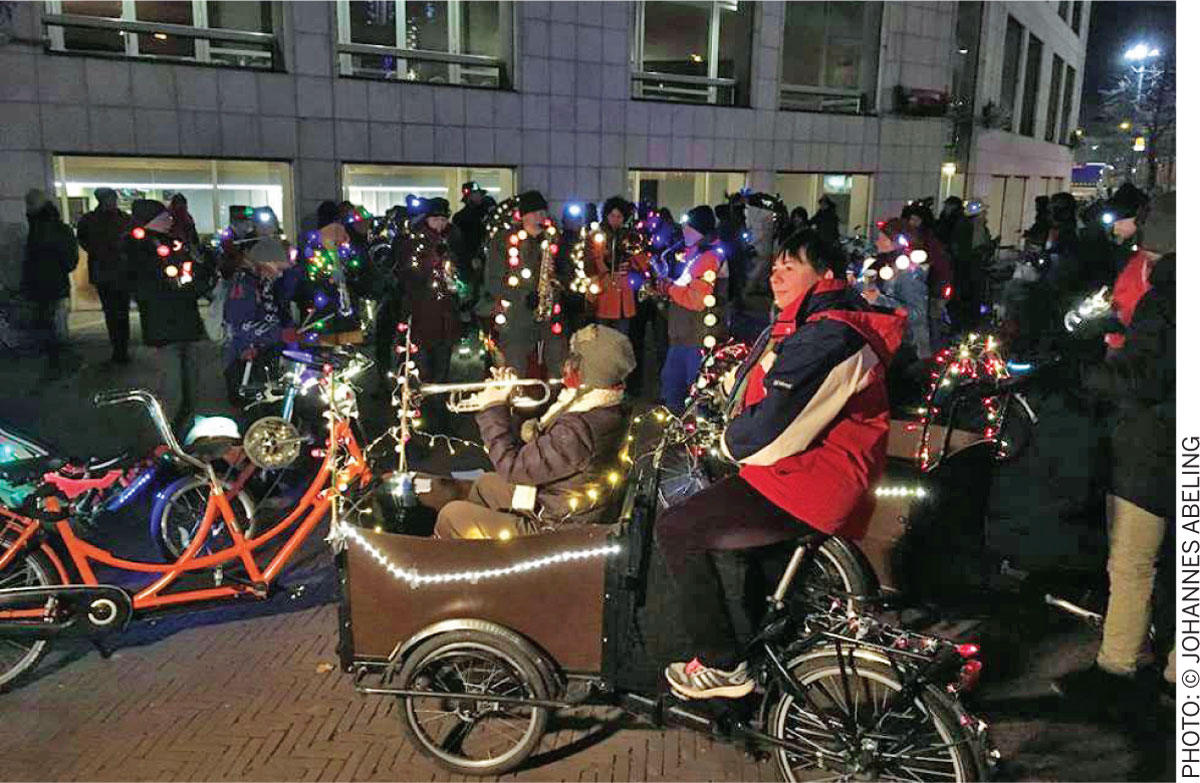
The rest of the city is also dedicated to light with several museums, which participate in the festival, night photography workshops and various activities that give visitors an insight into the innovation of light art. A sports club, for example, organised a special Amsterdam Light Walk this year. An attractive event for sporty walkers who started a walk of 15 kilometres at nightfall. The route led over the lighted streets, canals, a Christmas market and ended in the ‘Festival Heart’ via the Illuminade route.
Thanks to free accessibility, the works of art that are placed in the public domain and the fact that many different activities are organized in line with the festival, the Amsterdam Light Festival is both accessible and appealing to a wide audience. The ALF strengthens the identity and qualities of Amsterdam in many respects, by adding a new dimension to the historical city.
Frédérique ter Brugge, director of the festival, sums it up nicely: “Over the past five years, the festival has gained a permanent place in many calendars. The number of repeat visits is a strong indicator of this. The festival appeals to a broad public through the varied range of interactive, colourful and impressive light works that offer a surprising view on the city.”

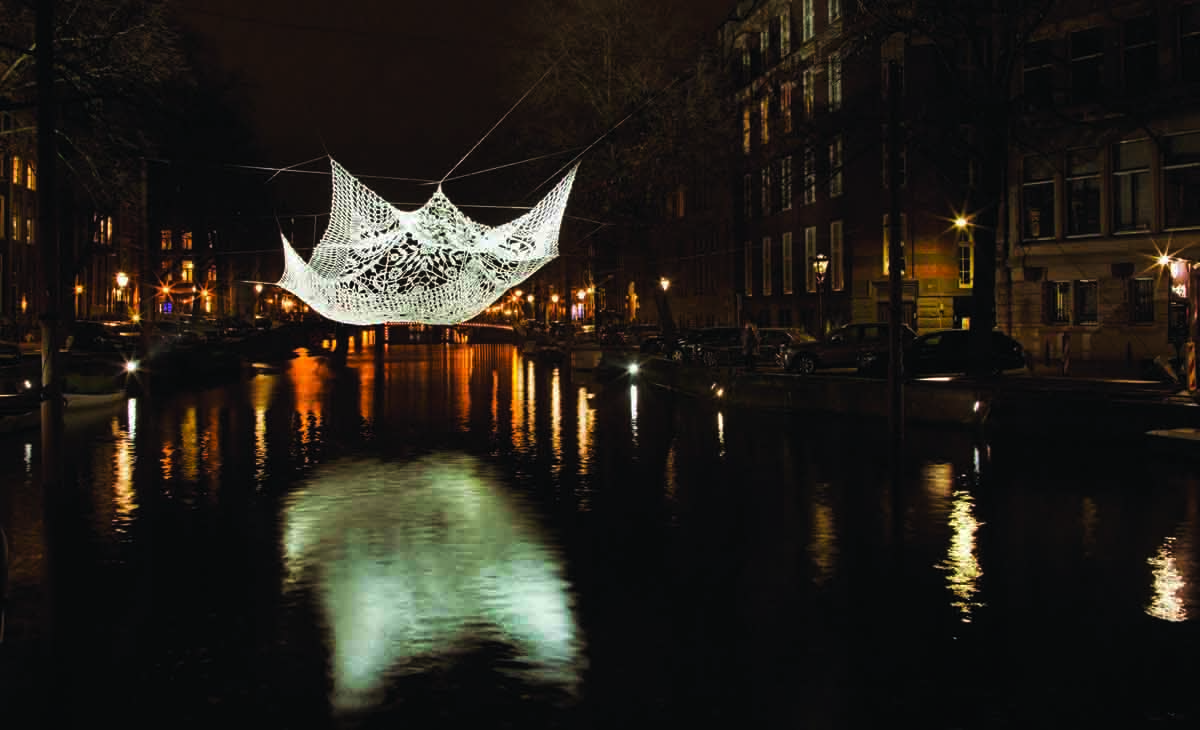

Comments (0)